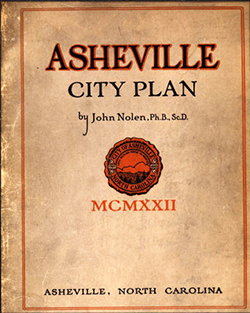
The City Beautiful movement, a loosely connected grassroots organization devoted to urban renewal, was influential nationwide in the late nineteenth and early twentieth centuries. Reacting to the perceived ugliness of their urban environment resulting from industrialization, individuals and groups began to work for improvements. The immediate catalyst for the City Beautiful movement was the 1893 Chicago World's Fair, which exhibited an idealized urban setting of white classical architecture in a formal symmetrical arrangement with canals and lagoons designed under the direction of Daniel H. Burnham and Frederick Law Olmsted. The "White City" of the World's Fair starkly contrasted with the "Black City" of industrial Chicago and showed the benefits of planned urban settings. Many people who attended the fair returned to their hometowns with a new vision of urban beautification.
The primary goals of the City Beautiful movement were to enhance urban areas and make them more sanitary. Its leaders proposed that public buildings reflect classical architecture, that streets be lined with trees, and that towns provide landscaped public parks with fountains and statuary. They also called for paved and lighted streets, underground wiring, regular garbage collection, and adequate water and sewer systems. These objectives were further popularized in the magazines of civic groups distributed throughout the United States.
In North Carolina-a state without large, highly populated urban areas but with several medium-sized cities, as well as small towns and villages centered around textile mills-the City Beautiful movement was spearheaded by local civic groups, especially women's clubs. As chair of the North Carolina exhibit at the Chicago World's Fair of 1893, Sallie Southall Cotten, the wife of Robert Randolph Cotten, saw the possibilities of urban beautification in her own state. In 1902 she was instrumental in organizing the North Carolina Federation of Women's Clubs, which had designated village improvement as one of its original goals. By 1912, 95 women's clubs across the state were engaged in civic work, much of which involved city beautification. They awarded prizes for the loveliest flower gardens along the streets, raised money to fix up schoolyards, and urged local governments to clean streets and sidewalks and to develop more public parks and playgrounds.
A notable movement developed among textile mill owners to improve company towns in North Carolina. Earle S. Draper, a landscape architect in Charlotte, planned or upgraded numerous mill villages in the state from 1917 into the 1930s. His design of Spindale for Tanner Mills in 1919 incorporated the basic principles of the City Beautiful movement and made it a model textile community for that time. Draper also designed the Rowan Cotton Mills in Salisbury, Richmond Cotton Mills in Laurel Hill, Carolina Cotton and Woolen Mill in Spray (now Eden), and others.
Influenced by the City Beautiful movement, North Carolina municipalities hired consultants to prepare city plans. An example is the Asheville Plan developed by John Nolen, who proposed that Asheville City Hall and Buncombe County Courthouse, both constructed in 1927, be part of a civic complex. The plans drawn up in the 1920s had government financing and were implemented until the Great Depression drastically curtailed revenue.